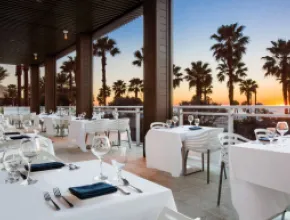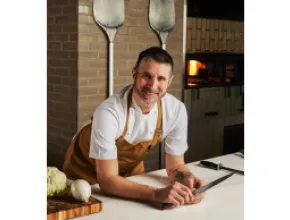Large conference centers traditionally have not been known for their hands-on approach when it comes to F&B, but like many properties in the segment, The National Conference Center and its West Belmont Place events center have amped up their cuisine experience to get a little more cozy with customers after a recent ownership change and major renovation.
Led by Executive Chef Chris Ferrier, the 68-acre Northern Virginia facility, with 917 guest rooms, more than 250,000 square feet of meeting space and 250 conference rooms, has put the personal touch on its F&B offerings, tapping into the latest culinary teambuilding trends and striving to source its food locally when possible.
A major priority when it came to revamping its food service operations was to move its long-serving steam tables into the kitchen, in favor of induction cooktops that bring the chefs and diners closer together.
“You can imagine an older-style cafeteria—it was literally 16 steam tables, built into the countertop,” Ferrier said of the pre-renovation dining room. “So now we can cook omelets for 400 people. We are sautéing and grilling the flank steaks, and chicken with cilantro, and cooking-to-order for guests. We do paninis literally in front of the guests. Now we do the prep work up front and finishing in the back. We’re literally not just throwing food under a food lamp and walking away.”
This major rethinking of the food experience extends to a local sourcing effort whenever feasible, considering the large group sizes the property typically caters to.
“We have fresh fish delivered six days a week from three different fish mongers. We wait for them to see what’s available in the next few days—what do they have that’s fresh, for 600 or 700 people?” Ferrier said. “In 2016 we used 70 different local Virginia farm products, from eggs to pork to arugula that is grown hydroponically.”
Ferrier mentioned a recent trip to area farms arranged by Visit Loudoun County for local chefs, with one surprising result that will lead to a most-innovative culinary teambuilding exercise.
“We’re going to buy a whole pig and do a training session for staff to break down the whole thing,” Ferrier said. “Some clients said ‘We’d love to do that,’ so we’re arranging it in April. They’re going to bring in the pig and the butcher is going to show how to break it down.”
Other, more traditional culinary teambuilding programs on the menu include attendees breaking into teams to create California rolls, stuffed ravioli and chocolate truffles for a group meal for 40, and a program last fall that took advantage of the property’s outdoor fire pit area for a barbecue event where teams created their own sauces. Chef’s table gatherings are also a good idea for smaller segments of a larger group.
Group Offerings
Ferrier’s personal goal of eating more healthily has inspired him to offer the option to groups by including less refined carbohydrates such as pastries, pancakes and sugary foods. By offering breakfast foods that are low on the Glycemic Index and slower to digest, attendees keep their energy levels up.
“You want them to be interested in learning at the meeting,” he said. “If they’re going to sit down all day they’re going to need to be engaged. Your body wants vitamins first thing in the morning. It’s bad to start off with lots of sugar and lots of carbs.”







